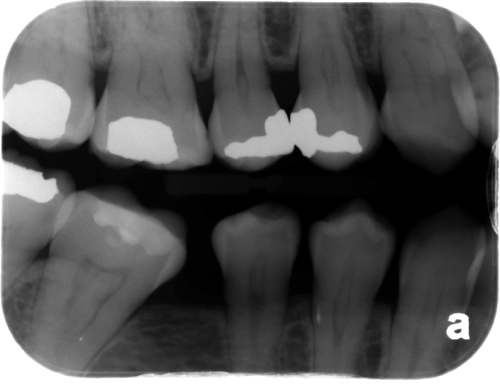This is an interesting case of multiple teeth with pulp stones. Pulp stones present as well-defined radiopaque entities in the pulp chamber and/or root canal space. If they are large enough, the canal will be enlarged around them to accommodate them. Check out the pulp stone party below. 😀

If you have any questions or comments about pulp stones, please leave them below. Thanks and enjoy!




Are pulp stones and pulp calcification same? For example in a radio graph if I see pulp stones, can I select the option pulp calcification in MCQ’s
A pulp stone is a type of pulp calcification so yes they are the same thing. Pulpal sclerosis is a different type of pulp calcification. Hope this helps. 🙂
Dear Shawneen,
I’d like to mention that there are some more recent articles showing that there are some differences between secondary and tertiary dentin on one hand and pulp stones on the other hand. One main difference may be that dentin or calcifications are formed by odontoblasts while the development of pulp stones seems to be initiated by pulpal cells. Another one for sure is found in histological examinations.
Cheers and thanks for sharing
Marc
Marc,
Thanks for the additional information. I will definitely have to look into that as that’s very interesting.
Shawneen
Beres F, Isaac J, Mouton L, Rouziere S, Berdal A, Simon S, et al. Comparative Physicochemical Analysis of Pulp Stone and Dentin. Journal of endodontics. 2016;42(3):432-8.
Goga R, Chandler NP, Oginni AO. Pulp stones: a review. International endodontic journal. 2008;41(6):457-68.
Ninomiya M, Ohishi M, Kido J, Ohsaki Y, Nagata T. Immunohistochemical localization of osteopontin in human pulp stones. Journal of endodontics. 2001;27(4):269-72.